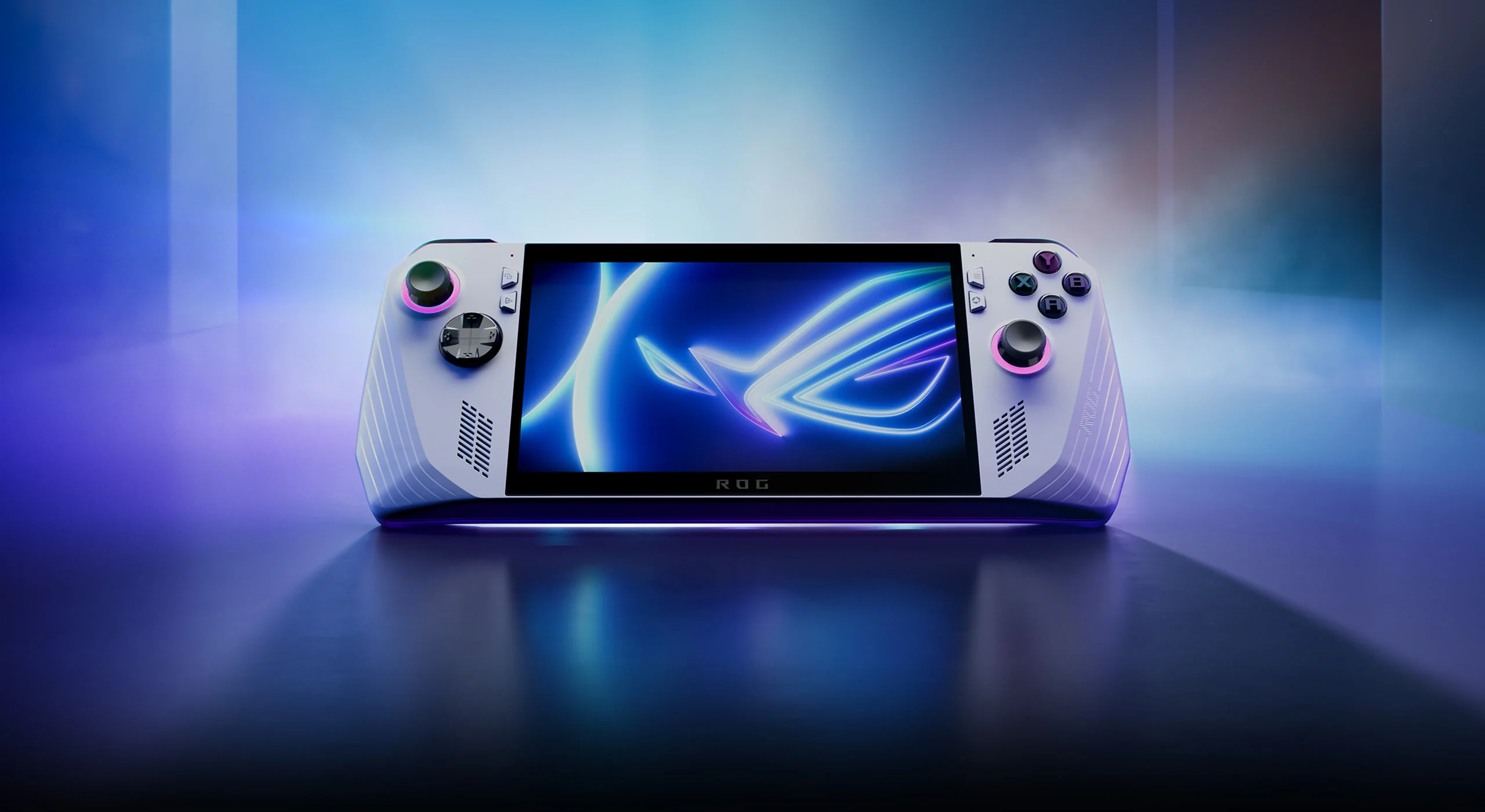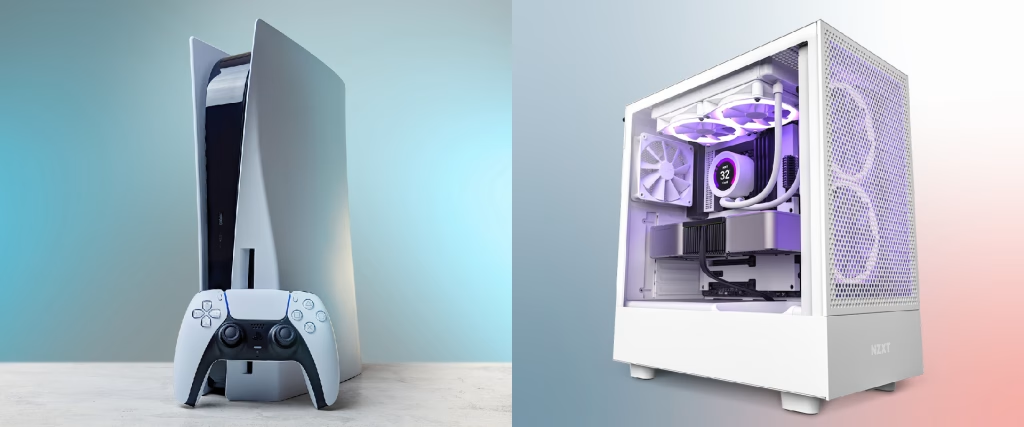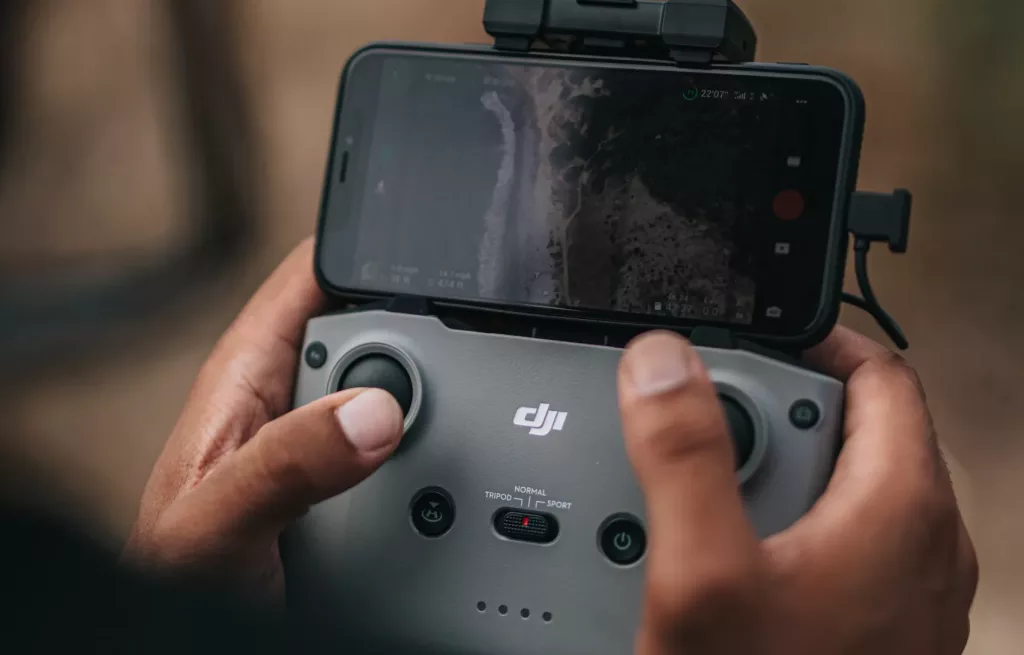The ASUS ROG Ally packs an AMD Ryzen Z1 octa-core procesor. There are two models – one with the Z1 processor and the higher-end one with the Z1 Extreme processor. We’ll get into the exact differences in the end. Let’s quickly cover the tech specs.
- The Ally features a stunning 7-inch Full HD glossy display. It goes up to 120 Hz and has a response time of 7ms. The maximum brightness is 500 nits.
- The 16GB LPDDR5 RAM is dual-channel.
- There’s a 512GB NVMe SSD.
The device offers ABXY buttons, a D-pad, L&R triggers and bumpers, assignable buttons, thumbsticks, and four dedicated buttons for View, Menu, Command Center, and Armoury Crate.
In terms of connectivity, you get Wi-Fi 6E, Bluetooth 5.2, and type-C power supply. The built-in speaker system is quite powerful with Dolby Atmos. The rest you can read on the official page.
I’m not a huge fan of the color and chassis design, honestly. But that’s a subjective thing and your mileage may vary. In terms of more practical stuff such as sound quality, thermals, battery backup, grip comfort, etc., the experience is actually quite positive. I’m going to do head-to-head comparisons with other devices like the Steam Deck and Switch below.
The device has RGB with Aura Sync.
Performance Review
The Ally runs Windows 11 and can manage 30-50 FPS in AAA games on low or medium presets. Always play while plugged in to get a higher FPS. Now, the key point here is what you’re comparing it to. All gaming performance today is relative. For example, when one tests a GPU, it’s compared with its peers – ones from the previous generation, ones from competitors in the same price range, and so on.
Coming from a console, I won’t recommend going for the Windows-only Ally. Sure, you might get slightly more FPS in some games, but overall, the consoles are just so much better than any handheld. Coming from a smartphone, it will be a much, much better experience. For those who play on low-end PCs and laptops, the change could go either way. And if you’re used to a big screen and high FPS on a gaming PC, this will be underwhelming to say the least.
Note that the Ally is a handheld PC, not a gaming console. As such, it can accomplish a variety of tasks. It certainly cannot beat laptops and PCs (simply because of the screen real estate more than anything else) but it can easily work as your backup or portable PC.
In my opinion, spending upward of $1000 on a handheld PC is just bonkers. Save more and go for a whole PC. The Ally only costs you around $600-700. The Steam Deck with 512GB storage is $450. More about this comparison later.
Okay, so as I said, any performance review has to be relative. Pick what you want to compare it with and jump into the section below. If there’s nothing to compare to, you might just be looking for an answer to whether or not the Ally is a good handheld gaming PC in 2024 for your personal use. Well, I can say that it certainly won’t disappoint you, but you might want to look into the Steam Deck. If you’re not tethered to Windows games, you might also want to look into consoles like the PS5 and Xbox Series X/S. They offer way more value for your money.
ASUS ROG Ally vs. Steam Deck
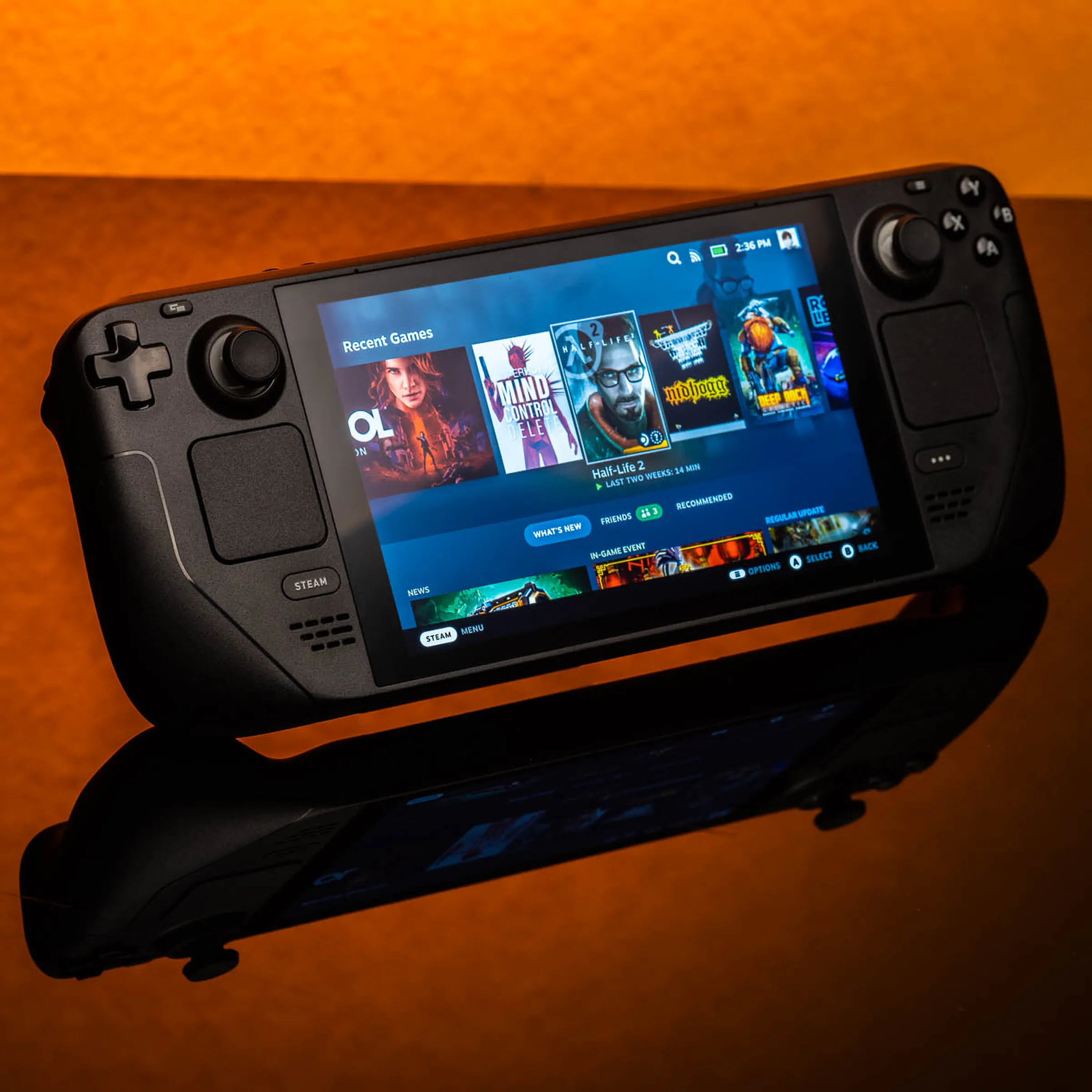
Even on battery (10W and 15W modes), the Ally performs just as well as the Steam Deck OLED in terms of in-game FPS while having a 1080p display and better speakers. At 25W (when plugged in), the Ally outperforms the Steam Deck in the majority of games, including most AAA titles. Some games are definitely optimized for the SteamOS experience (such as Cyberpunk 2077) and there, the Steam Deck might have an upper hand, but still, the Ally is an overall better device for the ~$200 extra you’re paying. But when it comes to controls, be ready to be disappointed with the Ally.
- Ally has a 7“ 120 Hz display vs. Steam Deck OLED which has a 7.4” 90 Hz OLED screen. The resolution is Full HD on Ally and 900p on Deck OLED. When you’re actually gaming, the difference will be minimal but in the favor of Ally. But because the Steam Deck OLED has an OLED panel (duh), the overall feel (inky blacks, popping colors) is just so much better.
- The build quality of the Ally’s thumbsticks is inferior to Steam Deck’s, but everything else is on par. The Deck also has a touchpad, though it’s arguable how useful that is, as everyone uses the device differently. But compared head-to-head, the controls on the Steam Deck are much more ergonomic and comfortable than those on the Ally. Controls are actually the most important aspect for a handheld gaming device. Over time, Valve has done a really good job of making the Steam Deck an excellent handheld device. ASUS has done nothing of the sort, and thus, in the whole ergonomics department, the Steam Deck gets a big win.
- There’s also a design flaw in the Ally that the hot air is blown out through the SD card slot. The Deck has no such issue and internally, is a better built device.
- In terms of the acoustics, the Ally does so much better than the Steam Deck. Sound might be a low priority for you, but better speakers can make or break the gaming experience. In that, the Ally wins hands-down. It’s surprisingly good and powerful.
- The Steam Deck is running an operating system optimized for the hardware and the device’s use case. The Ally is running Windows 11, a general, multi-purpose OS. As such, everything from the user interface to the snappiness of the system is better on the Steam Deck. This does mean that only games optimized for Linux (as SteamOS is a Linux distro) work well on the Deck, whereas anything optimized well for Windows (which is the vast majority of games out there) runs well on Ally. Whereas Ally might have an upper hand here, note that Windows isn’t really neat when it’s run on smaller screens. As the OS isn’t tweaked to suit a smaller screen, it can be quite frustrating to move around in the OS. The Armoury Crate overlay is kind of like the shortcut menu that can help you do most useful tasks easily, but the issues under the hood persist.
- In battery backup, the Steam Deck wins fair and square. The Ally’s battery will give up on you pretty soon. If this is a big concern for you (if you’re mostly away from a power outlet), I’d recommend against the Ally. The Ally has three power modes: 10W, 15W, and 25W. The higher it is, the more performance and battery drain you will have. You can choose between 10W and 15W when not plugged in.
ASUS ROG Ally vs. PS5 and Xbox Series X/S
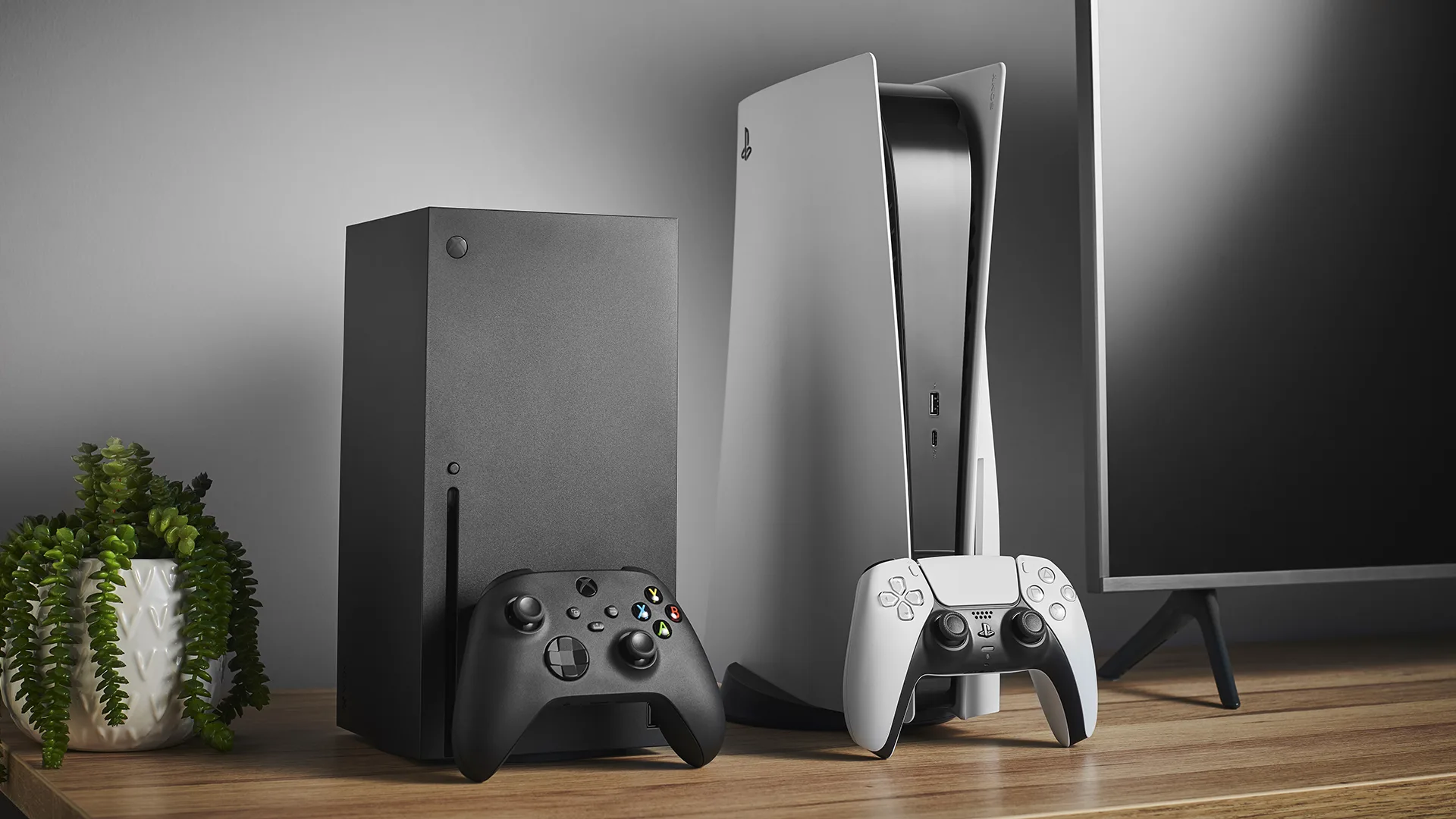
The main reason why I never compare the PlayStation and Xbox consoles with anything, including gaming PCs, is simply because the main selling point of these devices is the exclusive games. As they are exclusive, they aren’t available on others. This makes any comparison futile. Though you can compare the hardware inside, the consoles have their FPS locked and games optimized for those framerates (usually lower, like 30 FPS).
The PS5 and Xbox Series X/S (let’s call them both “consoles”) offer better performance overall. Whether it’s the internal components such as the CPU and GPU cores or connectivity, user experience (and ease of use), game library, or internal storage – the consoles win hands down. There is no way the Ally can compare to any console in terms of specs.
Now, Sony and Microsoft have both had years and years of reiterating their designs and patching their flaws. So, both the software and the hardware on the consoles are top-notch. When you can buy the PS5 for $500, it makes little sense to go for the Ally unless if you’re looking for an on-the-go device that can be carried with you.
But anyone who has experienced both, the controllers and games of consoles and then the Ally device and its games will tell you that gaming is so much better on the consoles. The only legitimate reason (apart from portability) that I can think of to choose the Ally over a PS5 or XSX/S is if you specifically want to play Windows games and don’t have the budget for a full gaming PC.
ASUS ROG Ally vs. Nintendo Switch
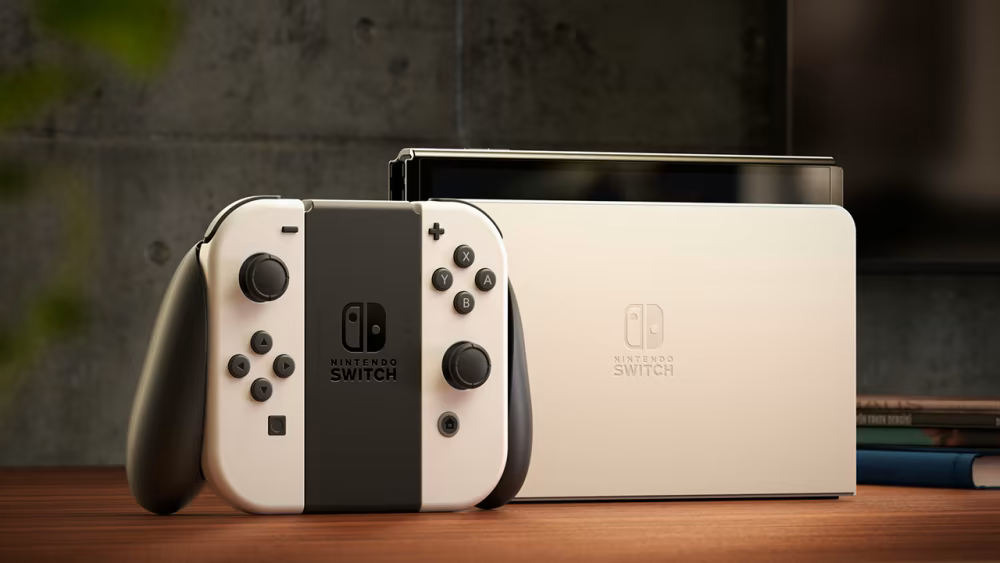
The Switch ($300) and the Switch OLED ($350) are also not easily comparable to the Ally. First of all, there’s the OS consideration. If you want to play Windows games, the Ally is not only the better but the only option besides the Steam Deck. Consoles and the Switch are out of the question.
Nintendo Switch OLED has a 7“ 720p 60 Hz OLED screen. The Ally’s 1080p 120 Hz non-OLED screen is better. The CPU, GPU, storage, RAM, speakers, it’s all inferior in the Switch. This is simply because Switch isn’t designed to run Elden Ring and Cyberpunk 2077. It’s designed to play Animal Crossing, Super Mario Party, and The Legend of Zelda.
If you’re looking for a companion for your travel, leisure time, or just to pick up a hobby, both work really well. If you’re not a big gamer, the Switch is better as it’s cheaper and the games are more fun for casual players. But if you’re a proper gamer who will play for hours and wants to try new titles all the time, choose the ROG Ally over the Nintendo Switch.
Playing The Legend of Zelda is perfectly fine over the Switch’s 7“ OLED display and 4GB RAM. The device is optimized for that sort of gameplay. Playing MWII is comfortable on the Ally’s 7” 1080p display and 16GB RAM. It really comes down to what you want to play.
ASUS ROG Ally vs. Gaming Laptop
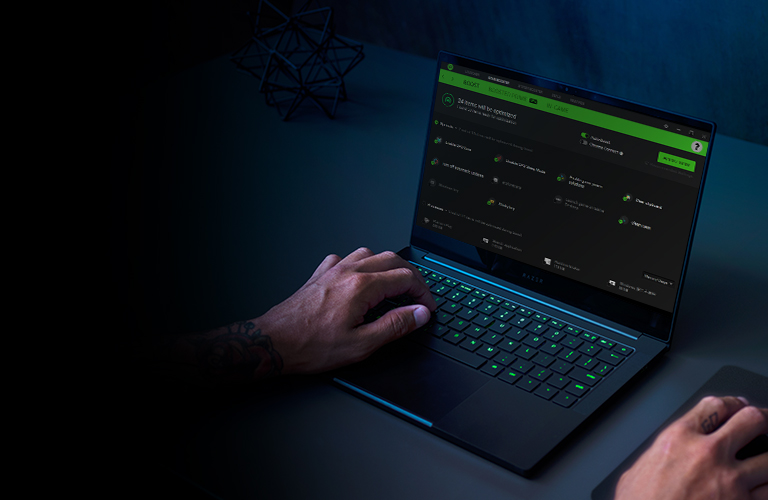
I will say this upfront – the Ally is better than a cheap laptop. But it’s definitely nothing compared to a proper gaming laptop (which will also cost you at least twice as much). A cheap laptop (including cheap gaming laptops) will always compromise on something. And no, it’s not going to be something less important like the speakers or the build quality. It’s always going to be the GPU, the display, the RAM, or the storage.
It’s just so much better to go for the Ally.
Gamers with a laptop generally appreciate the portability compared to a console or a desktop PC. You get that here. On top of that, you have a proper Windows 11 PC with 16GB RAM, a Full HD display, and amazing speakers. What’s not to like in the Ally?
But yes, it doesn’t stack up against gaming laptops above $1000. It simply cannot compete with them. The specs are too far apart. The display, internal hardware, build quality, cooling, it’s all better on a proper gaming laptop. If your budget permits a proper gaming laptop above $1000, I’d say stick with that. It will have the portability you want and much better gaming performance. Such a laptop can also do all PC tasks better.
A laptop is so much more graceful to carry around. It’s not rare to find people carrying a ton of life support alongside their Ally or Steam Deck. These accessories and peripherals can not only make the whole setup cumbersome but also expensive (mainly the eGPUs). In a laptop, you’re getting a neat package that’s not handheld but the keyboard and trackpad (mouse, of course, for gaming) are so much better than a handheld anyway. If the Ally’s controller ergonomics were novel or groundbreaking then it would still make some sense, for example a ton of people have a gaming laptop/PC and a Steam Deck. But that’s not the case either.
ASUS ROG Ally vs. Lenovo Legion Go
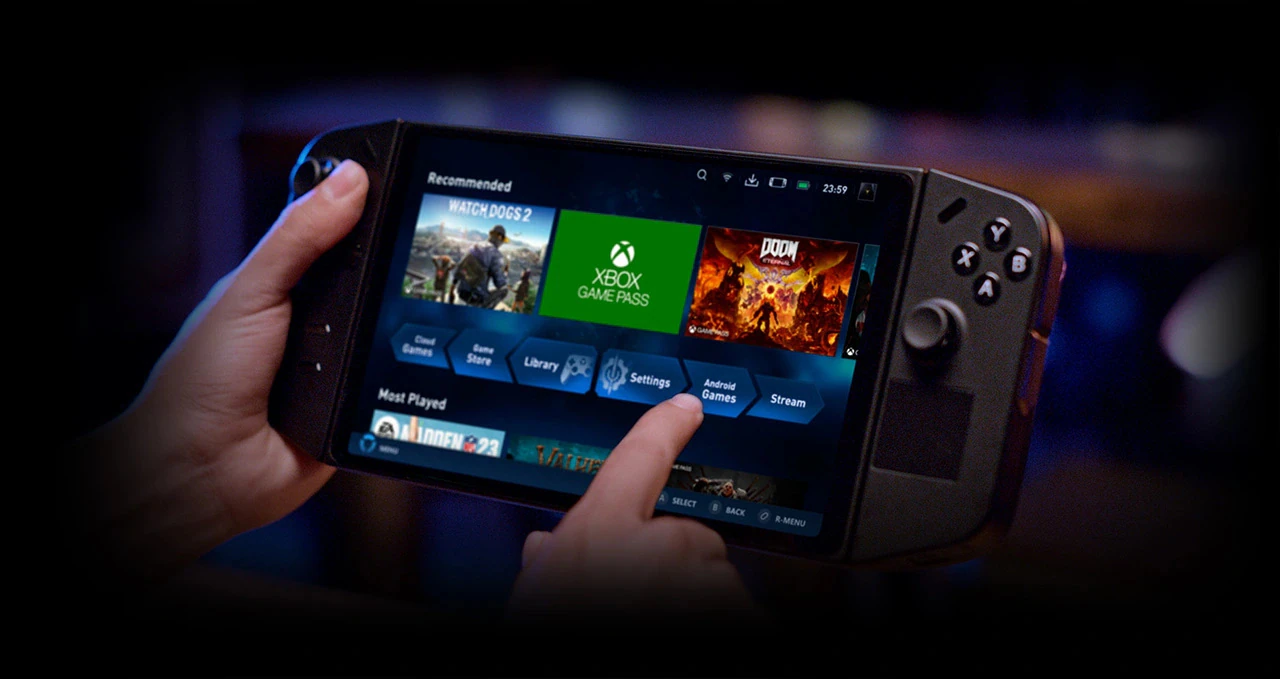
The Legion Go is powered by the same Z1 Extreme chip. It has an 8.8“ 1600p screen with a 144 Hz refresh rate. It costs $600-900 based on the specs. For example, the 2TB SSD one is quite expensive. The Go also comes with detachable controllers but the setup can be a mess. In terms of portability, the cheaper Ally is definitely better. Both devices have access to the same core hardware and OS, so the performance is comparable in most of the cases.
The display is much better on the Go. If you’re not worried about the additional bulk (~200g heavier) and higher price, the Go is a decent device.
The real issue with the Go is that it’s not properly optimized. It’s one thing to make it all bigger, better and another to really optimize all that for gameplay. The 1600p screen on an 8.8“ screen is not ideal for AAA gaming at high FPS given the Z1 Extreme chip. The experience will be definitely smoother on the ROG Ally.
The thing is you can lock the device to 1080p. At this, the FPS experience is much better on the Go. So, that might be worth trying for some. The native resolution of 1600p will have you run around in Cyberpunk 2077 at around 30 FPS when charging. That will drop 30-40% if you’re not plugged in, basically making the game unplayable. The Ally, on the other hand, is a much better package. Compared to the Go, it’s better optimized for its use case (though not as well as the Steam Deck OLED is).
So, unless Lenovo does some remarkable fixes over time (which it doesn’t seem to be doing), the Ally is a better deal right now. It’s just a more well-rounded device between the two.
ASUS ROG Ally vs. MSI Claw
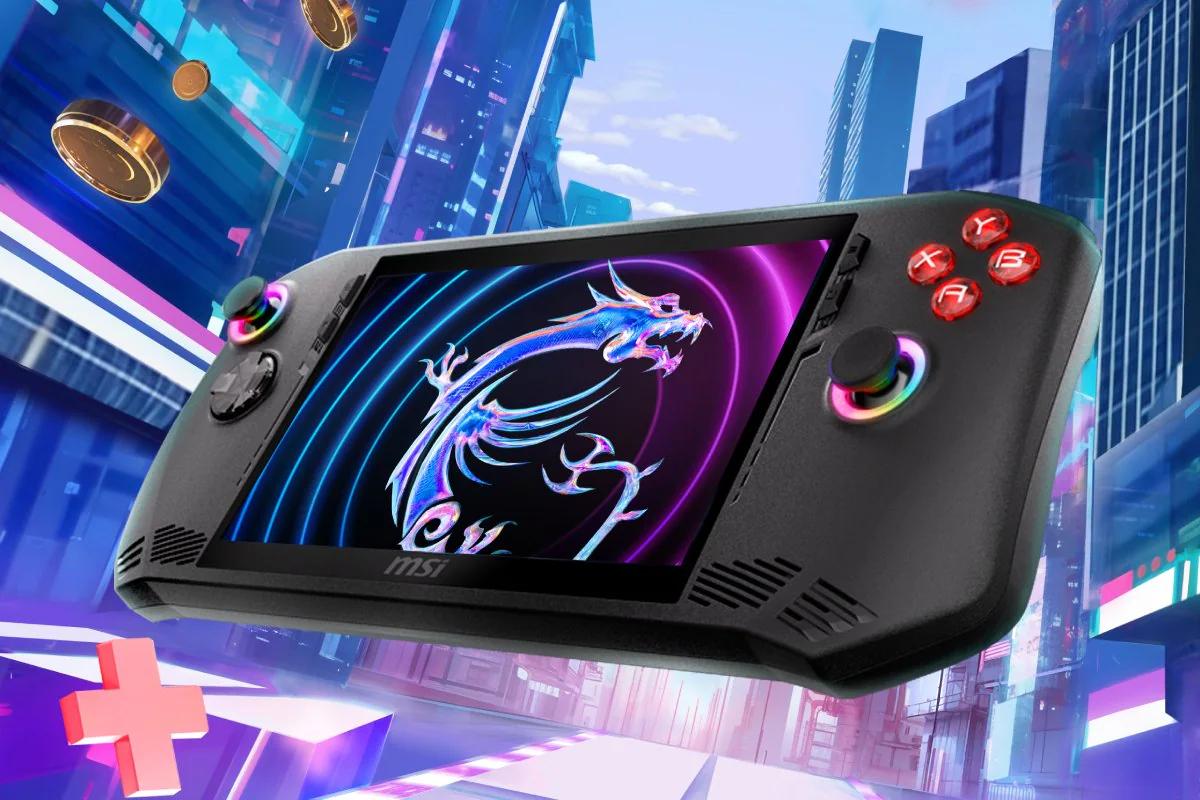
The mobile GPU market is ruled by AMD. Gaming consoles, handheld devices, and even many smartphones are all packing AMD chipsets with integrated graphics. Intel has had no presence in this territory up until now. The MSI Claw, launched in March 2024, is a little rough around the edges and that’s to be expected.
The Claw also has a 7“ 1080p IPS screen that can go up to 120 Hz.
Performance-wise, the Ally beats the Claw. The FPS is higher in all games, including AAA titles, even when you turn on Intel XeSS for upscaling. The Lenovo Legion Go has its own perks, though it’s slightly inferior to the Ally in some aspects (see the previous section), but the Claw is nowhere near Go or Ally level performance while costing more than both of them.
Currently, the MSI Claw is a bad deal. It all depends on how well the Intel and MSI teams can collaborate to improve the game performance and optimize the hardware over the next few iterations. One can only draw any solid conclusion in 6-8 months.
The class of processors being used includes an NPU unit – that’s a natural processing unit, a special component meant to accelerate AI workloads. Maybe the Claw can do Windows Copilot stuff better than its peers? That hardly matters. The integrated Arc graphics are also abysmal. Given Intel is kind of the specialist when it comes to integrated graphics (the company started it when AMD didn’t even exist), that’s just sad to see.
That being said, the Claw does pack some useful features – Wi-Fi 7, Bluetooth 5.4, fingerprint lock, PC Game Pass subscription free for first month, Thunderbolt, up to 32GB RAM, and the aforementioned NPU in the SoC. Maybe when they improve the device further, it will become a solid competitor, who knows?
ROG Ally Models Comparison
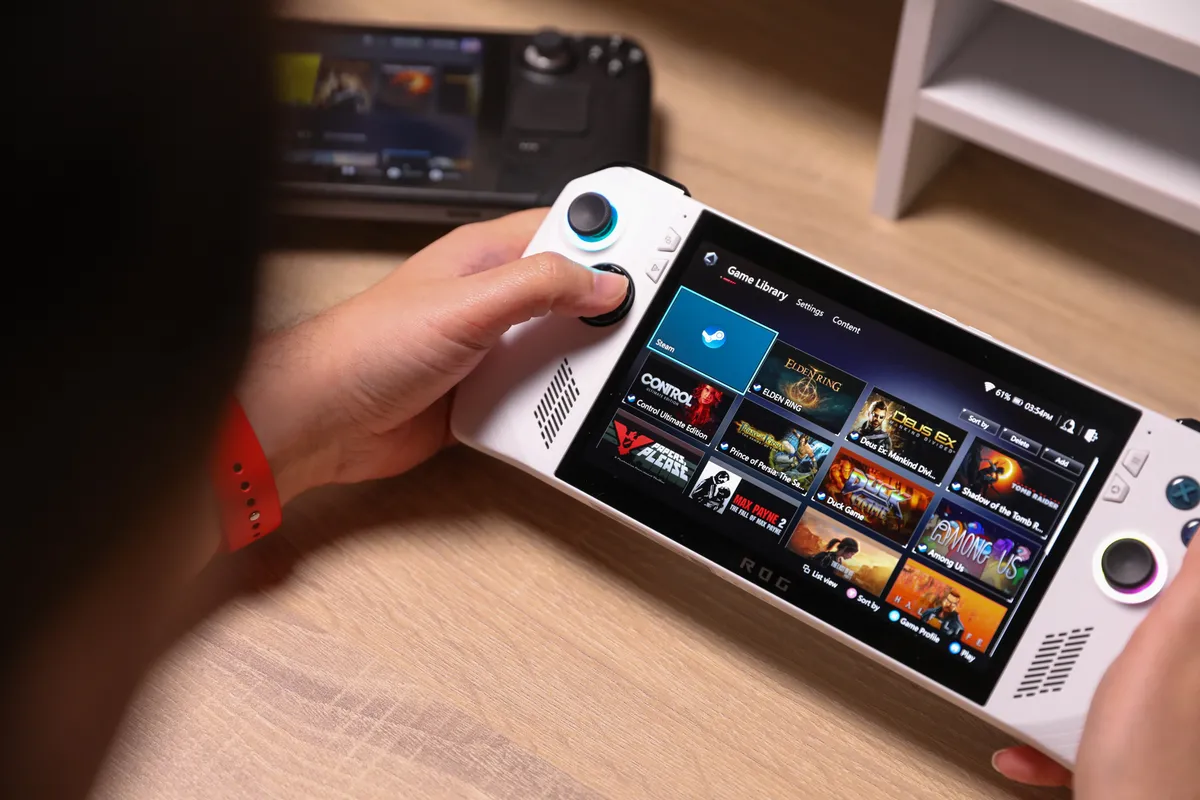
As I said earlier, there are a couple of models to choose from here. One is slightly better. Here are the exact differences:
- CPU: 6-core processor vs. 8-core processor
- GPU: 2.5 GHz up to 2.8 tflops vs. 2.7 GHz up to 8.6 tflops
With only this, you get a significant difference in overall FPS. ASUS has an official page comparing the FPS across major titles such as Elden Ring, FIFA 23, Cyberpunk 2077, MWII, Forza 5, and Diablo IV. Expect 10-20 more frames per second across the board on high-end games, and an even bigger difference in mid-range titles.
The display, TDP, RAM, and storage are the same between the two models.


